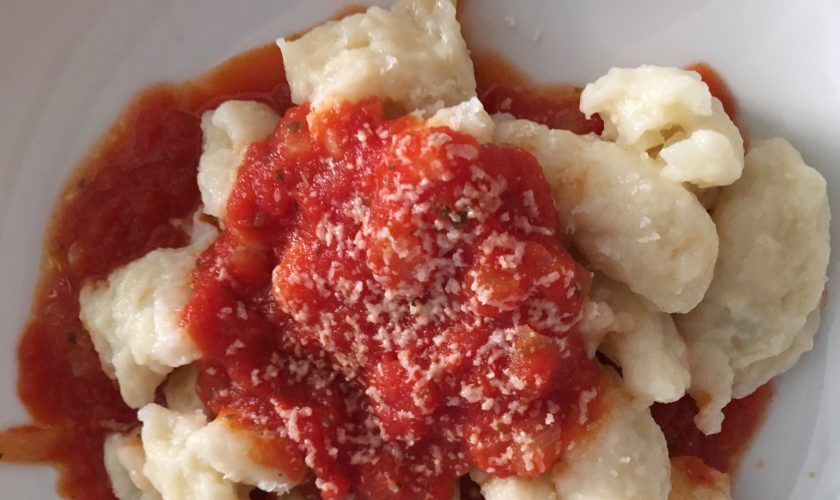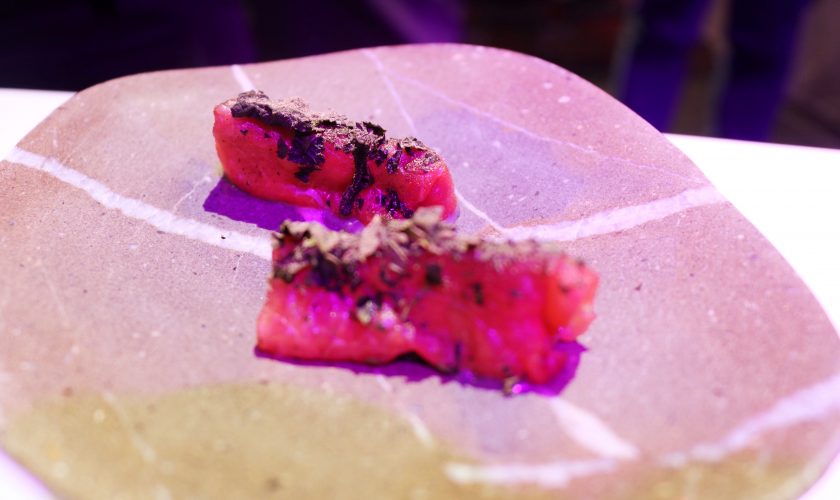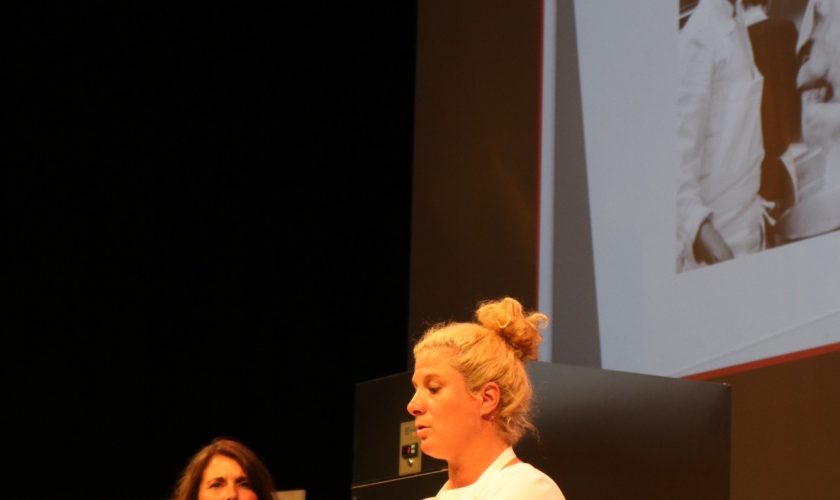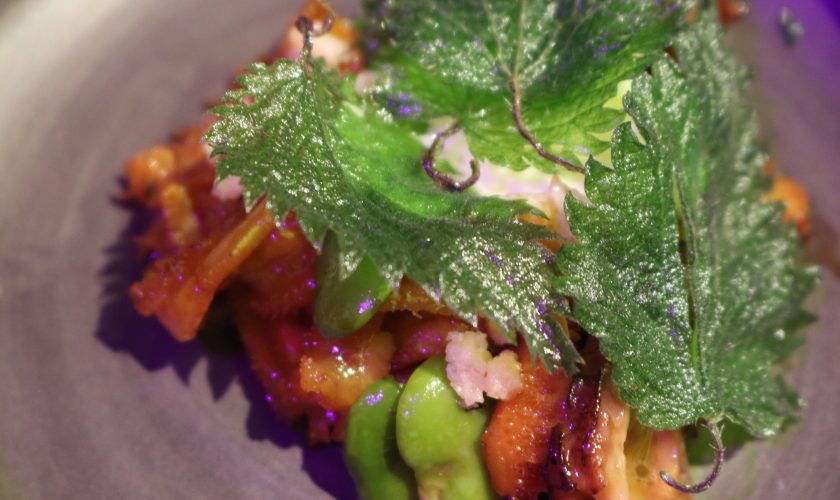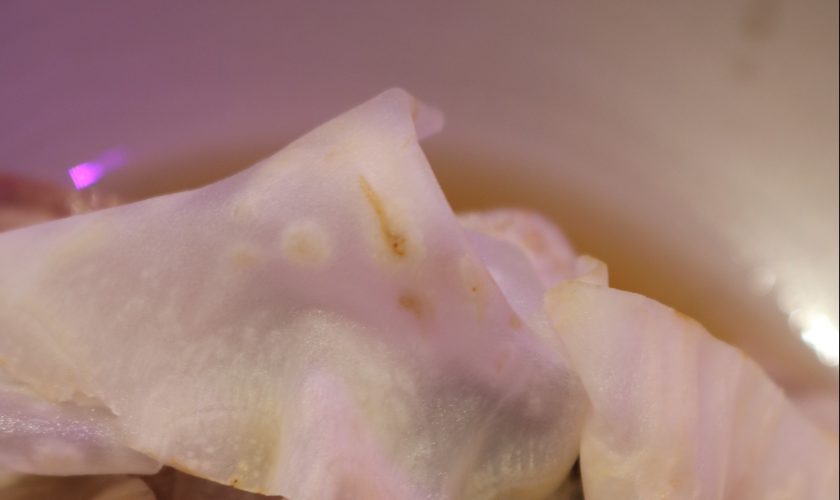I had the great pleasure to cooperate with the Australian Magazine Threepence to create a personal story about my passion for food blogging. Britta is the publisher/Editor of the magazine that discovers stories of people with passions around the world.
In this article you will learn a lot about how I came to my blogging and how traditional home made tomato sauce is made! I thank Britta for the story!
SwiTalian: Discovering my identity
Italians speak with the heart and the hands. They are temperamental and proud when they talk about their culture and habits. They forever seek to pass on their passion. I realise now that growing up in Switzerland as a child in a south Italian immigrant family gave me the ideal cultural mix in life.
From the Swiss side, there is humility and an honest attitude. Swiss people may not show their hearty character from the beginning, but they are the most open-minded and respectful people I have ever met. They care about their neighbours and love to create surrounds that are welcoming and comfortable.
It is so akin to me when I reflect on the special combination of a reliable and humble Swiss attitude mingled with a temperamental, creative and enjoyable Italian Dolce Vita style. I am SwiTalian, as someone once described me!
Following the unknown
Calabria is a beautiful region located at the toe point of the Italian boot surrounded by the splendid crystal blue Ionian and Tyrrhenian Seas. It’s a land of strong and intense emotions.
Despite its beauty and picturesque lifestyle, many south Italian regions experienced economic stagnation for many years. Hence, my parents immigrated from Calabria to the Swiss canton Baselland in the 70’s to find luck, love and a better future for their children. They heard about Switzerland offering work and support for families and business alike. They decided to take a risk and follow an unknown path in search of a better future.
My mother and father taught me much about life and food, about never giving up and following my dreams. I admire the fact they left their home for the unknown with only a few coins in their pocket. They may have been penniless, but they held a rich history of heritage and tradition.
My father worked many years as a mason then later as an operation employee in an industrial company. My mother took care about us kids.
My food and travel journey
I have always been thirsty to discover the world, to travel and discover different cultures. This passion keeps me enthusiastic about life every day. It flows in my blood. Thanks to my parents, growing up in Switzerland with a solid education in marketing & communication offered the perfect base to realize my dreams. I worked as Marketing & Communications Manager in the healthcare area. So, I was fortunate enough to be part of a challenging and interesting working field.
Why traveling captures my heart
Venturing through unknown places allowed me to intimately experience and understand the food and culture, and how these bind people together no matter where from. I may not know the local or native language in a country, but this is no barrier when you share food and life by your gut instinct.
Today I communicate with the language of love and appreciation, usually through the currency of food, smiles, hospitality and hugs.
These experiences led to my blog, Lovefoodish. It makes me ultimately happy to have the chance to share my food and life stories with a curious community throughout the world. Blogging opens the door to local and international places. I encounter lovely people full of passion. They motivate me by sharing their knowledge, and listening to their personal stories fills me with joy.
Gifted with sharing cultural heritage
Although I traverse the world in search of great food and culture, it is my family roots that I cherish the most. I often think back to the time where I would accompany my father to the local Swiss farmer to buy fresh vegetables, fruits or meat. My father’s German was a bit sketchy so he would also gesture with his hands and feet to communicate, which was very entertaining! Having learnt German at a Swiss school it wasn’t long before I was very fluent in German and I helped my parents learn to adopt the language more comfortably.
What makes Calabria special?
My father transferred to me the view to always question the origin of food and how to select quality products, and to really appreciate food from the land.
A tomato isn’t just a tomato.
He loved to explain to me what makes Calabria special. I still feel pride for him when he reminisces. But he also taught me how to appreciate delicious Swiss ingredients, such as potatoes or seasonal juicy apples and cherries. Living in a small village in the countryside gave us close accessibility to the farmer. This made him feel more at home and serene, since in Calabria he also lived on a farm.
The extra-virgin olive oil, wines, bergamot liqueurs, liquorice, citron, herbs, honey and jams from Calabria are incomparable. They also offer a famous red onion called Cipolla rossa di Tropea which is mild and a bit sweeter than other varieties. There are special types of homemade pasta, one is called maccaruni, still made today using the traditional methods.
Maccaruni are made using a thin long squared wire. The technique used goes back to my grandmother, and beyond. Another one is gnocchi. Calabrians celebrate food that is made as a family and there are some classic meats, cheeses and breads amongst the fresh produce.
Italian immigrants in Switzerland
A typical thing that immigrants have here in Switzerland are rented gardens allotments where they spend much of their summer days and evenings planting and tending to vegetables. My father was no exception. He planted his edible garden to replicate the farm where he grew up in Italy. It gave him the “freedom” to be in nature and do something he loved.
What about Italians loving Swiss food?
When my parents visit me in Zurich they crave a Zürcher Geschnetzletes. It’s a veal steak cut in little slices with potato Röschti and a champignon cream sauce. We love to go for lunch at the Restaurant Kronenhalle. The place is historic and famous for serving this dish since 1924. Artists like Picasso, Strauss and Coco Chanel used to come here for a drink and food. This history somehow makes it so much more enjoyable.
Zurich has a lot to offer besides traditional Suisse Cuisine. You can find good quality, creative and multicultural food in every corner of the city. These multicultural vibes give me the feeling of traveling whilst still in my hometown. I invite you to stroll through my blog and get a picture of the culinary offerings in Zurich.
The humble tomato – making Passata
There is nothing like producing tomato sauce from scratch, particularly when it is shared as a family tradition. Handmade and flavoursome, one of the tastiest things you will ever try. It is the highlight of our summers, when the family comes together spending hours sorting, peeling, and boiling tomatoes while chatting. Once you understand that good food is about simple, basic quality ingredients you won’t hesitate one minute to invest time in preparing it yourself.
How to prepare your own passata
My mother talks to friends and parents to find the best tomato supplier at a decent price. We use around 100-150 KG of tomatoes which produces sauce for up to a year and is shared amongst my brother, parents and myself.
Despite the volume, home is where our tomato sauce is produced. Once the tomatoes are ordered, we drive at least 2-3 times to get all of the boxed tomatoes back home. Today mostly it’s my brother, his wife and some aunts and uncles that all produce the sauce together.
The tomatoes are carefully washed. My parents are perfectly equipped with all the material and instruments needed as big pans, manual mincer/sifter, Plenty of empty jars with a matching lid, big pans, cookers (gas).
After we wash the tomatoes they are cut into half pieces. The seeds, spotted or blotted pieces are removed. Than we add water in the pan and they cook for several hours (covered up) in a huge container over the gas until they are mushy. Once they are cooked, we leave them to cool. After cooling a sifter is used to eliminate the tomato skin and the seeds.
Now the beautiful red liquid is filled into the washed and pre-prepared jars. As a nest step the jars are sterilized for few hours on the fire in a huge aluminum pan. And of course before everybody leaves, the highlight of the day is to eat pasta with the fresh made sauce all together.
Recipe of a traditional Italian Tomato Sauce (makes 4 serves)
500 ml pot of tomato passata 1 red onion, chopped 1-2 spoons of olive oil handful basil leaves salt/pepper
Preparation
Roast the onions with the oil, add the tomato passata, bring to boiling add salt and basil, let boil on little temperature for 30 min. ca. Adjust it with salt/pepper to your desire.
The marvel of life’s pantry staples
Alongside taking care of the administrative tasks, my mother is an excellent pasta maker. On occasion she loves to spoil us with homemade maccaruni, tagliatelle or gnocchi. It’s a skill passed down from my grandmother.
On a classic Sunday in my family’s home the family comes together to enjoy food and energetic discussion. It’s not a cliché, we really do speak very loudly to each other. It’s how we express our emotions and feelings.
For this occasion, we often make pasta from scratch. It is a way of playing with ingredients, getting the feeling on how texture and shapes are created. While writing this post I shared this tradition with my niece and nephew. There is no other experience like eating homemade gnocchi with home-produced tomato sauce. It is no doubt the cherry on the cake, except it’s tomato sauce and pasta.
Recipe for gnocchi (makes 4 serves)
General rule of thumb:
1 medium-sized potato per serving or person. For every potato, use approximately 1/2 cup of flour.
1 Kg of potatoes, 1 egg, 300 g of flour, salt
To serve : Grated parmesan cheese Basil Leafs
Making the gnocchi
- Boil the potatoes in a large pot for 20 minutes until fork tender, put just enough water to cover them, leave the potatoes’ skin on. The skin helps the potato not too absorb access water. Over-boiling will cause potatoes to become mushy and too wet.
- Drain potatoes well, remove them from the pot. Allow them to cool.
- Peel potatoes
- Rice the potatoes by using a potato ricer or simply a fork, this is how my grandmother did.
- Mound riced potato on the middle of a clean, dry countertop, create a little vulcano and top with flour.
- Add salt
- Add the egg, break the egg into the centre of the well. Beat the egg with a fork.
- Incorporate all ingredients by using the fork.
Start to pull in flour and potato to mix ingredients. Use your hands to combine all the ingredients. Start to form the dough. - Knead the dough until it has a smooth surface. Be careful not to over-knead. Be aware of adding flour at this point, careful: too much flour will give you hard gnocchi.
- Shape dough into a long, wide rectangle for cutting.
- Cut the dough into several pieces.
- From this piece, you start to roll the dough into ropes. Make an evenly-distributed rope.
- Cut little cubes out of the robe and start forming the gnocchi either with a fork or a wood gnocchi roller or even by using the tip of your trigger and middle finger.
- To prevent the gnocchi sticking, keep gnocchi in a cool area and tip them with flour.
The cooking:
- Shake away any superfluous flour.
- Place the finished gnocchi in a large pot of salted boiling water.
- Cook the gnocchi until they float to the top. Usually 2-4 minutes. Gently remove them with a slotted spoon.
- Drain them well.
- Toss them in the tomato sauce pan and cook together for about 2 minutes.
- Put your grated parmesan cheese and basil leaves on top.
In the mood of a good Italian restaurant in town where to find home made pasta? Check my online food guide here.
